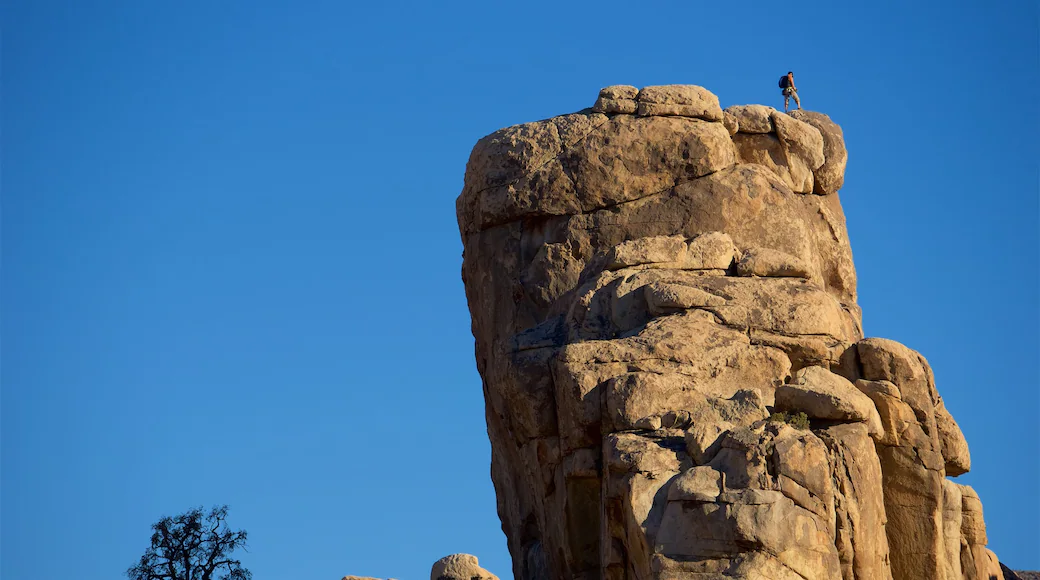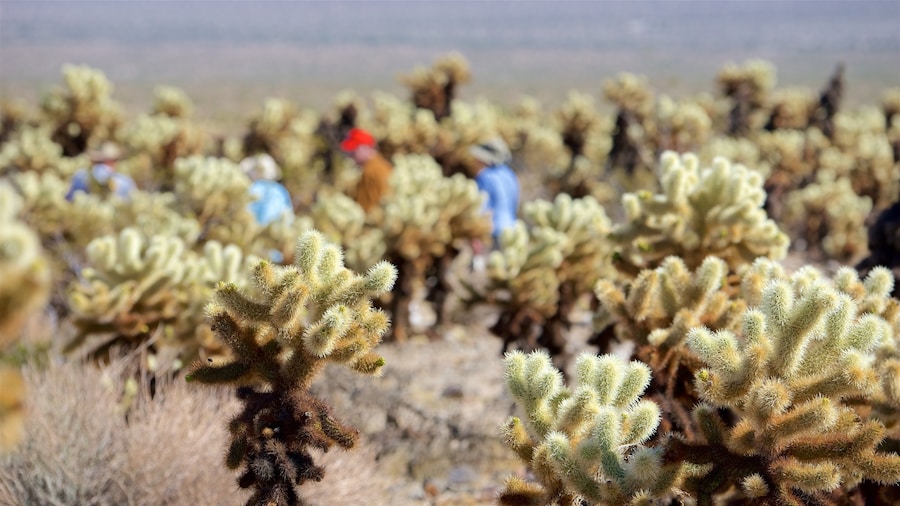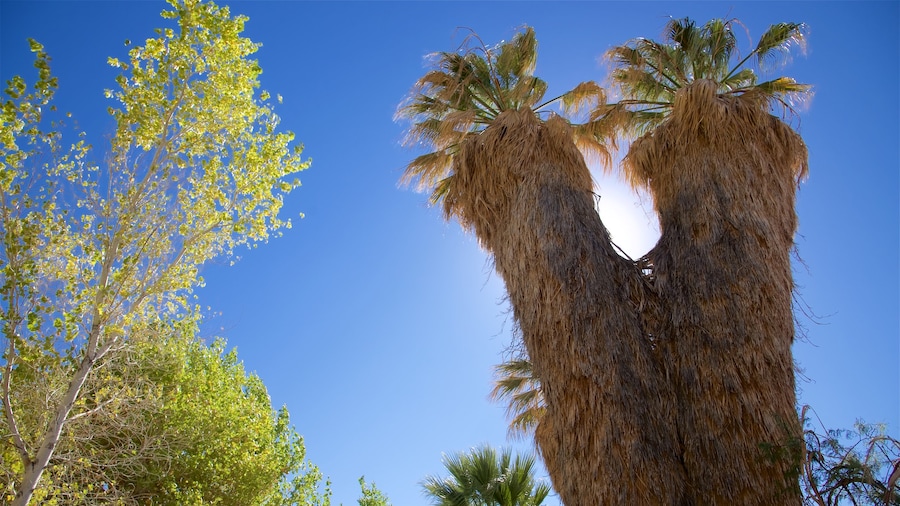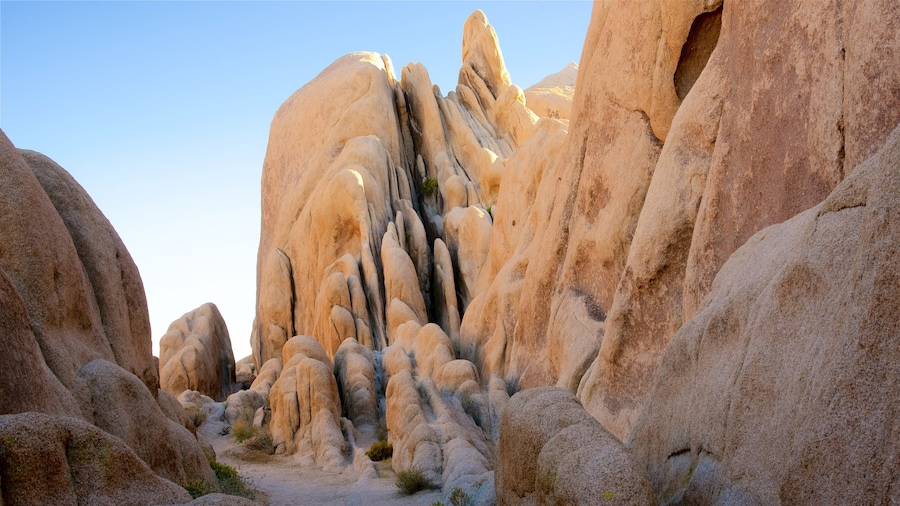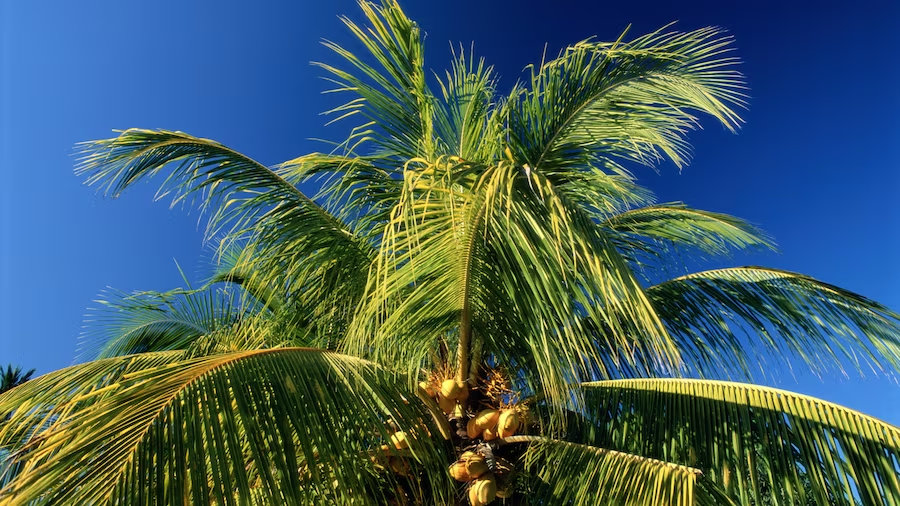Make your way along the meandering trails of Hidden Valley, where enormous granite boulders resemble temples and mythological faces. Although notable now for its arid terrain, water once flowed and green pastures flourished here. In the 1870s, a band of cowboys chose Hidden Valley as a place to hide and feed stolen cattle before selling it on to ranchers. Today, it is one of the Joshua Tree National Park’s most popular destinations.
Numerous walking routes fan out from the Hidden Valley Campground and bring you up close with imposing rock formations. Spot desert flora, such as juniper, pinyon and yucca, that thrives in the valley’s microclimate. The 1-mile (1.6-kilometer) Hidden Valley Trail takes you to the supposed refuge of the cattle raiders. Bring your own food to eat at a designated picnic area with shaded tables.
Find places to watch and take part in rock climbing adventures. Numerous routes offer challenges to climbers at Intersection Rock, a 150-feet (46-meter) tall monzonite crag. A short walk away, the Old Woman and the Blob are other favorite climbing sites. Children will love clambering over boulders and squeezing between cracks in rock walls.
Barker Dam Nature Trail is an interesting walk, which leads to Barker Dam. Cattle ranchers built the dam, which attracts birds and bighorn sheep. Visit historic landmarks such as the derelict gold mine called Wall Street Mill. The homestead and mine of Keys Ranch present a glimpse into the isolated life of a ranching family.
The valley is about 10 miles (16 kilometers) from the west entrance of Joshua Tree National Park and 16 miles (26 kilometers) from its north entrance. Free parking is available at the trailheads. The campground has 44 pitches offered at a first-come, first-served basis. It’s a basic site with vault toilets and no potable water.
Hidden Valley welcomes visitors year round. Fees are applicable to enter the park and for camping. Ask at the park’s visitor centers about ranger-led programs in this region of the park.


